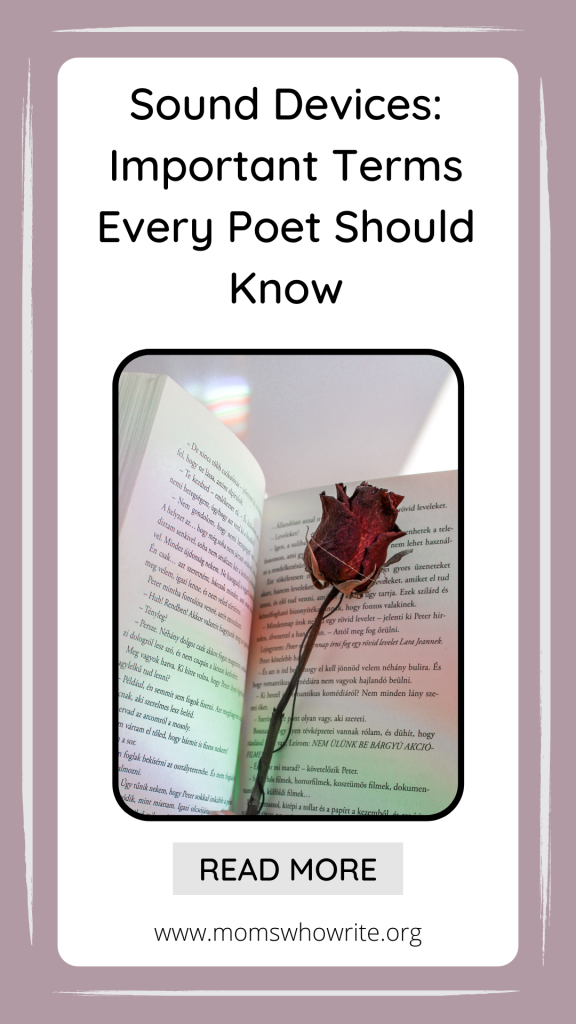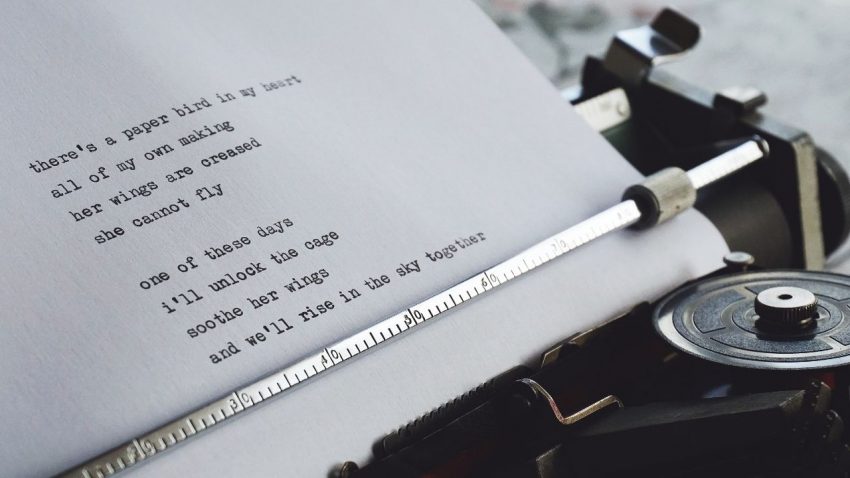Welcome back to Important Terms Every Poet Should Know! If you read my post last week, you’ll know that for National Poetry Month, I’m writing about some of the foundational terms used when talking about poetry. Why? Because there is something powerful in having just the right word for the job.
The right term can allow you to condense a whole thought into a single word, multiplying your ability to communicate and contribute well to the conversation. The reverse is also true: not knowing the lingo of a particular group or field can be alienating, leaving you feeling like you’re on the fringes.
A lot of writers don’t have a degree in English or publishing, and joining this community can be overwhelming. I know that when I began dipping my toe in, the sheer number of new terms and the ins and outs of the vocabulary was daunting. Poetry in particular has a lot of specific terminologies that can leave new poets feeling left out or confused.
It doesn’t have to be that way, though, when a handful of words can give you the tools to help you communicate well. To that end, this month we’re discussing some of the most useful poetic terms.
Last week, we took a stab at the difficult task of defining poetry, and I mentioned believing that poetry can be identified, in part, by the emphasis on three main ingredients: sound, form, and meaning. Over the next three weeks, we’ll take some time to look at each of these ingredients, starting with Sound Devices.
Ingredient 1: Sound Devices
When you read a poem, one of the first things you’re going to notice is how the word sounds play together. Here are ten terms that describe the way sound works in poetry.
Diction
Diction is word choice. The words a poet chooses are picked carefully, and not just for their meaning, but for the way they sound. When we talk about the very specific choices a poet made, we can use the term “diction” to acknowledge this special attention to the power of word choice.
Alliteration
Alliteration is the repetition of the same letter or sound at the beginning of adjacent or closely connected words. Chances are good you’ve seen this one mentioned before, probably even used it. My favorite example of alliteration to show my students is Graeme Base’s book Animalia. Each richly illustrated page is based on an alliterative nonsense phrase, like “an armored armadillo avoiding an angry alligator” or “proud peacocks preening perfect plumage.” Notice how each of these words begins with the same letter sound and the effect that has on the ear when you read them aloud.
Assonance and Consonance
Assonance and Consonance are related to alliteration in that they also focus on the repetition of sound. Assonance refers to the repetition of vowel sounds in adjacent or closely connected words. Consonance: the repetition of consonant sounds in adjacent or closely connected words.
However, unlike in alliteration, the repetition of the sound does not need to be at the beginning of the word but can be in any position: beginning, middle, end, or a combination. The focus is on the repetition of the sound, not where it is in the word. The primary difference between the two is the sounds they use: assonance is the repetition of vowel sounds (Ex. Go slow over the road; the light of the fire is a sight) and consonance is the repetition of consonant sounds (Ex. Toss the glass, boss; I will crawl away with the ball).
Onomatopoeia
Onomatopoeia is so much fun. It’s the naming of a thing or action by a vocal imitation of the sound associated with it. The key to onomatopoeia (apart from figuring out how to spell and pronounce it) is ALL about sound: onomatopoeic words mean what they sound like. The classic examples of this are from old-school comic books with their graphic Boom! Crash! Bang! Pow! images, but there are many words we use every day that are onomatopoeia: the jingle of your keys, the swish of sheets as you make the bed, a clink of a glass as it’s set on the table. The longer you think about it, the more you’ll find in your vocabulary.
Now let’s look at…
Rhyme
Rhyme is the repetition of ending sounds. You probably already have a working definition of what a rhyme is thanks to Dr. Seuss (and most of the western poetry up to the 20th century), but there is more than one kind of rhyme in poetry:
True rhyme: identical-sounding endings (pot, hot; tears, spears)
Masculine rhyme: one syllable (cat, bat; pout, shout)
Feminine rhyme: two or more rhyming syllables (motion, ocean; willow, pillow)
Near rhyme/Slant rhyme: close, but not identical, repeated ending sounds (down, noon)
Although we’re used to looking for rhyme at the end of lines in poetry, you’ll see these used all over the place once you start looking for them.

Working Example of Sound Devices
Now that we’ve talked about several important sound devices that we see across poetry, take a minute to read Robert Frost’s classic poem Stopping by Woods on a Snowy Evening. Seeing how other poets use these tools gives me a deeper appreciation for the intentionality and artistry that goes into their writing, and new things pop out of even very familiar pieces like this. As you read, pay special attention to how he uses diction, alliteration, assonance, consonance, onomatopoeia, and rhyme (all kinds).
Stopping by Woods on a Snowy Evening By Robert Frost
Whose woods these are I think I know. His house is in the village though; He will not see me stopping here To watch his woods fill up with snow. My little horse must think it queer To stop without a farmhouse near Between the woods and frozen lake The darkest evening of the year. He gives his harness bells a shake To ask if there is some mistake. The only other sound’s the sweep Of easy wind and downy flake. The woods are lovely, dark and deep, But I have promises to keep, And miles to go before I sleep, And miles to go before I sleep.
About The Writer: Abby is a writer of fiction and poetry who joined the Moms Who Write team in November of 2021. She’s a homeschool mom of three who loves to teach writing and literature on the occasions she can be torn away from puttering in her garden and binge-reading whatever strikes her fancy. She lives in a rural town in Central Illinois with her husband, three kids, two cats, a guinea pig, and six chickens. To read more of Abby’s writing and to find her social media links, please visit her website at www.abbyharding.com.
